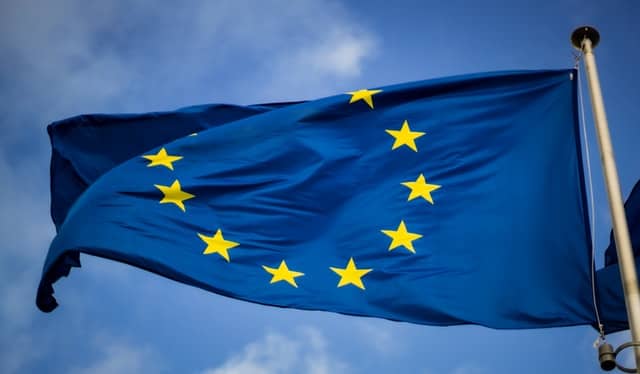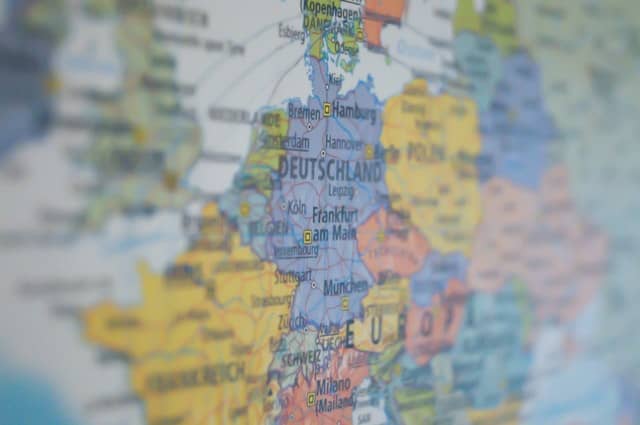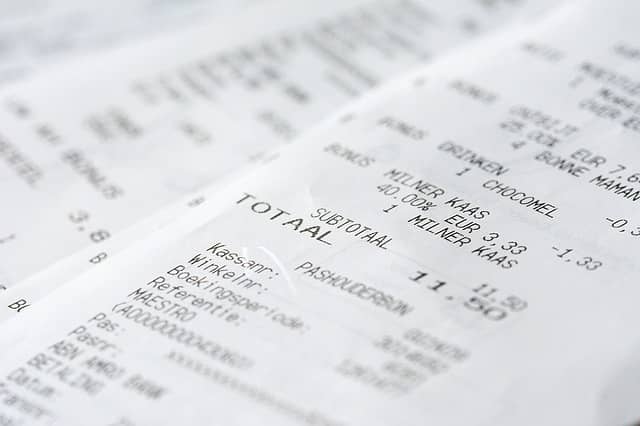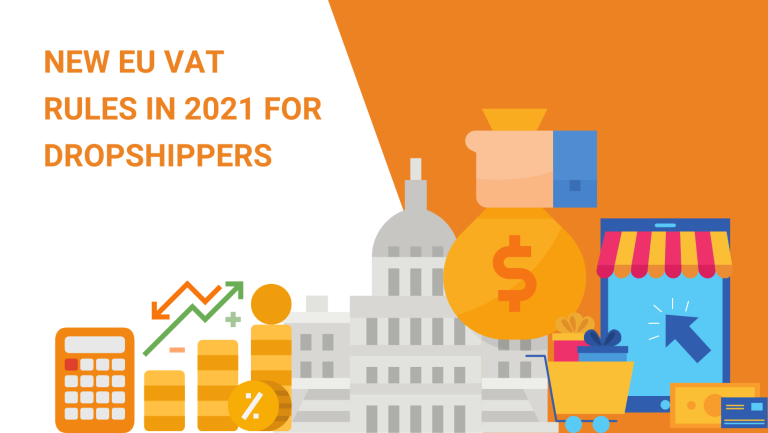The new EU VAT rules that should start from July 1, 2021, aim to modernize distance selling to European Union customers (B2C). However, many dropshippers are concerned about these EU VAT rules’ implications to their eCommerce businesses.
Is there a reason to panic? Will these changes simplify or complicate dropshipping? What about the monetary implications? Will eCommerce businesses have more costs?
There are so many questions related to this new EU VAT policy, but not enough answers. Here, we’ll explain how VAT on eCommerce sales to customers in EU member states has changed and what you should do to adjust your eCommerce business.
Let’s get going!
What Is EU VAT?
To start from the meaning: VAT stands for Value-Added Tax, commonly referred to as consumption tax. VAT as a concept exists in all EU member states. But, what does “value-added” mean?
In the EU, sellers tax a product at each point of sale (POS) when there’s an added value. Still not clear? Let’s see an example of this.
Imagine the end product is a 100% cotton T-shirt with a print being produced and sold in the European Union.

First, a cotton supplier sells the cotton to an EU T-shirt manufacturer for 50 cents and charges 10% VAT (5 cents). So, the T-shirt manufacturer pays 55 cents total. From those 55 cents, the cotton supplier keeps 50 and pays 5 cents to the government.
Then, the manufacturer produces the generic T-shirt and sells it to a brand store for 1 Euro + 10 cents for VAT, so altogether EUR1.10. The manufacturer keeps EUR1.5 (5 cents to reimburse him for the previous VAT) and pays 5 cents to the government.
And finally, the brand store prints a design on the T-shirt and sells it to the end consumer for 3 Euros + 30 cents VAT, altogether EUR3.30. The brand store keeps EUR3.10 (10 cents reimbursement for the previous VAT) and pays 20 cents to the government.
From this example, we can conclude two statements:
- VAT payments always end up in a government budget;
- Ultimately, the end-consumer pays the VAT;
What Are the Current EU VAT Rules?
The current EU VAT Rules have many loopholes which have given non-EU dropshippers an advantage over EU dropshippers.

Firstly, there’s a VAT exemption on imported items that value less than 22 euros. With this exemption, non-EU sellers have an advantage over EU sellers since the latter have to charge VAT.
The next issue for dropshippers selling to multiple EU countries lies in the VAT registration number. As a seller to EU customers, you have to register a separate VAT number in each country you sell.
Furthermore, the threshold for VAT registration in different EU countries for distance sales of goods or services is different. For dropshipping in Germany, Luxembourg, and Netherlands, this threshold is currently 100.000 EUR, while for all other 24 states, it’s 35.000 EUR.
Up to these amounts, as a dropshipper, you can still apply your local (domestic) VAT rate without the need to register for a VAT number in the customer country.
Well, let’s see how all of this will change from July 1.
What Will Change with the New EU VAT Rules from July 1, 2021?
Here are the main EU VAT changes that should start from July 1, 2021:
- The VAT exemption on transactions valued at less than EUR22 won’t be valid. From July on, every transaction to an EU customer is subject to VAT, no matter how small.
- Up until 150 Euros, the import transaction is subject to VAT only. Above 150 Euros, it’s subject to import duties and VAT.
- EU sellers can use the new OSS (one-stop-shop) scheme, which allows them to declare and pay their VAT in one EU country. By filing their OSS, the system then automatically distributes VAT payments per customer country.
- Non-EU sellers can use the Import One Stop Shop (IOSS) declaration to settle their VAT. They can register for a VAT number in any chosen EU country and file their IOSS once. Same as the OSS, the IOSS will then distribute their VAT based on the customer’s country.
- The current distance selling thresholds will be invalid, and in their place, there will be a standard, EU-wide threshold of 10.000 Euros. Below this amount, sellers can stay the VAT subject in the EU member state where their business operates and charge at a local VAT rate. Above this amount, they have to start charging at their customer’s VAT rate.
- VAT was previously due on import, where it was either dismissed for its low value or overlooked by customers. Now, VAT will be due at the point of sale (POS).
- And lastly, online marketplaces will be liable to charge VAT in the sellers’ name on their platform. They will acquire the status of a “deemed supplier.”
What Is OSS/IOSS?
An OSS stands for One-Stop-Shop – a new VAT scheme that takes center place in the new EU VAT rules starting from July 1, 2021.
With OSS, EU sellers can register in just one state and file one report for all their EU customers. The system then automatically distributes VAT per customer country.
Non-EU dropshipping businesses that sell to different EU countries can register for IOSS – Import One Stop Shop. They can choose any one EU country to register for IOSS, and they’ll enjoy the same benefits as EU businesses.
The OSS and IOSS are extensions of the 2015 MOSS – Mini One Stop Shop. MOSS is a simplified way to pay VAT for EU sales of TBE services (telecommunications, broadcasting, electronic).

Why Did the EU VAT Rules Change?
According to the European Commission, the VAT regulations in the EU had to be changed to cut down on red tape and provide better conditions for B2C, cross-border online selling.
With the OSS model, charging and filing VAT will be simplified for any EU business that sells cross-country within the EU. The same goes for non-EU dropshippers – they can choose one EU state to register and file their IOSS.
No VAT exemptions on lower valued imports mean that EU member states will benefit since their public revenues will increase. Plus, now EU dropshippers will not work with a disadvantage compared to third-country dropshippers.
Furthermore, the European Commission expects that the new EU VAT rules will prevent VAT fraud – a gray area up until now.

And lastly, the new EU VAT regulations will simplify the shopping experience of end customers. They will pay their local VAT rates, regardless of the seller’s location; with these new rules, the consumer location determines the VAT.
Who Will Be Most Affected by the Changed EU VAT Rules?
It’s safe to say that everyone involved in a product’s supply chain will be affected by these new EU VAT rules.
From dropshippers and eCommerce sellers to marketplaces, couriers, and of course, the end customers – everyone will have to adjust to the new regulations.
Online sellers and dropshippers will have to consider the implications of these new changes on their income and cash flow. As a dropshipper, you’ll have to find a way to increase the base prices to cover the VAT expense while still staying competitive.

If you sell independently on your eCommerce store (dropshipping with Shopify, WooCommerce, etc.), you have to start collecting VAT at the POS. In your case, your point-of-sale is your payment gateway.
If you sell through online marketplaces, get in touch with one of their agents to ask about the way they’ll handle VAT. Online marketplaces will have the status of “deemed suppliers” and be responsible for taking care of VAT in your name.
What Are the Major Impacts of the Changed EU VAT Rules on Dropshipping and eCommerce?
Both EU and non-EU dropshippers will feel the impacts of these new EU VAT rules. Here are the most significant effects (both positive and negative) you should expect your business to face:
- No need to apply for VAT in all of your customer’s countries. It’s enough to register for OSS/IOSS in one of the EU member states;
- Non-EU businesses will now charge VAT on all transactions since the exemption of up to 22 Euros will be canceled;
- EU and non-EU businesses will concur the same expenses, removing the disadvantage that EU online businesses had until now;
- Online marketplaces and platforms will take the responsibility and the status of “deemed suppliers” and charge VAT in the name of the seller;
Do Dropshippers Pay VAT?
Dropshippers that operate within the EU or sell to EU customers will need to charge and pay VAT.
If you have an established EU dropshipping business and are selling throughout different EU countries, you can register for OSS and file one tax report for all your EU customers, starting from July. The system will then automatically distribute VAT per country.
If you’re a non-EU dropshipper selling to EU countries, you have to choose one country to register in (Ireland has a friendly English website) and get a tax number. Then, you’ll file your IOSS (import one-stop-shop) and let it distribute VAT per customer location.
Do I Need to Charge VAT When Dropshipping?
If you’re an EU business or if you’re a non-EU business selling goods to EU customers, then yes – you will need to charge VAT when dropshipping.
How Can I Get OSS?
The OSS system is a digital platform. All EU countries have their own OSS/IOSS website where you can register. Usually, if your business is in one of the EU member states, you can register for OSS and become a VAT subject to that country.
If you’re a non-EU dropshipper selling to EU customers, you’ll have to choose one EU state to register for IOSS and get your tax number. You’ll then file your non-Union IOSS once and let the system distribute VAT per consumer country.
For English speakers, we recommend registering for IOSS on the Irish website since it’s entirely English. In any case, you should have at least some sales in the country where you register for a VAT number.
Registering for OSS or IOSS might raise the need for a fiscal registry. It would be best if you talk about this with your accountant or a tax professional – this will ensure that you comply with national and EU-wide laws.

In What EU Country To Register for OSS?
If you’ve established your business in an EU country, you can register for OSS there. If you’re a non-EU eCommerce business, you can choose one EU country to register for IOSS.
If you registered as a VAT subject in an EU country where you have stock in a warehouse, you have to continue your registration there even after these changes occur.
Should I Register for IOSS as a Non-EU Seller with EU Customers?
Yes! It’s always best to remain on the safe side of the law. As we said before, from July 1, 2021, VAT will be obligatory for all transactions to EU consumers.
In this regard, we highly recommend all dropshippers that sell to the European Union to register for IOSS in any EU country and start charging VAT. Like this, you won’t have to register in each customer country separately.
*Word of warning – if you’re a non-EU dropshipper with inventory storage in any EU country, you’ll have to stay a VAT subject there even after these reforms take place.

The IOSS scheme will allow you to cut back on paperwork and red tape. However, this means that you’ll have to increase your product prices. Messing with your pricing can be a bit tricky, depending on the product category.
Consider the monetary implications of having to collect VAT on the point-of-sale. Think of intelligent marketing strategies or importing different products with a better profit margin.
Which Transactions Do the New EU VAT Rules Apply To?
The new EU VAT rules that we expect to start from July 2021 apply to the following B2C transactions:
- Cross-border (distance) sales of goods or services throughout EU (from EU suppliers or deemed suppliers);
- Domestic sales of goods or services to a single EU country from an established EU business in the same country;
- Non-EU (third country) distance selling of goods or services to EU countries;
Are the New EU VAT Regulations a Good or a Bad Thing?
Although non-EU dropshippers might feel more restricted and suffer some monetary loss, the idea of these new EU VAT rules is to modernize and simplify VAT Europe-wide.
One of the most significant aspects of these new VAT rules is that now there’s a One-Stop-Shop (OSS) scheme, allowing businesses to register for a single VAT number and file VAT in just one EU country.
Supporters of these new VAT rules claim that having no VAT exemptions will benefit the public budget of EU countries. Furthermore, by doing this, the European Commission plans to prevent VAT fraud. How will it all unroll remains yet to be seen!
Can a Dropshipping Agent Help Me Comply with the New EU VAT Rules?
Yes. A full-service dropshipping agent can advise you on the best practices to stay legally safe and compliant with the new EU VAT regulations.
Is OSS/IOSS Registration Obligatory?
Although the new OSS and IOSS schemes are optional, we strongly recommend that you use them.
If you don’t register for OSS and start charging VAT at the POS, your customer will have to pay the customs or courier agent to access their order. This scenario is in no way beneficial to your business.
You wouldn’t want to register for OSS only if you’re an EU micro-business with less than EUR10.000/year earnings for the last two fiscal years. In this case, you can continue being subject to your local VAT authorities.
How Long Should I Keep VAT Records?
To comply with EU VAT rules, you have to keep all your VAT documentation and transactions from the last ten years of work. In most cases, you won’t need them. However, you’re obliged to have them at hand in case authorities ask to see them.
How to Keep Customers with the New EU VAT Rules?
To retain your customers, we recommend that you always be transparent and honest about all charges, including VAT.
Localize your website and let cookies pick up your customers’ locations. Doing this will allow you to calculate VAT at the POS in their local VAT rate.
Final Words
Generally speaking, the new EU VAT rules are definitely a good thing. However, product supply chains can be complicated, often with many parties involved. So, the question remains – are we prepared enough for this shift? Will it be fair for everyone involved?
In just a few months, the new EU VAT rules start, so it’s time to look at your supply chain and adjust your eCommerce business model.
If you still need help. Our team is always at your disposal. Reach out, and we’ll guide you through all these changes.

